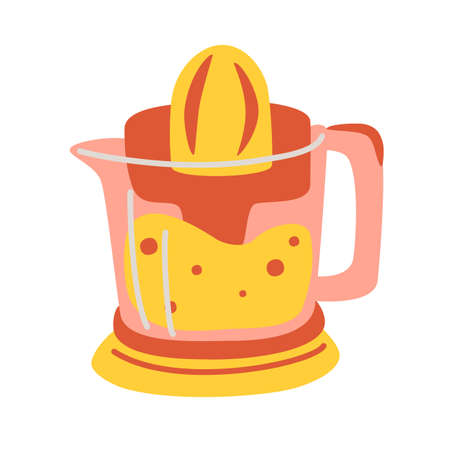Introduction to Bone Health and Recovery
Maintaining strong and healthy bones is fundamental to overall well-being, particularly during periods of recovery. In the UK, bone health becomes a significant concern following common incidents such as fractures from falls, sporting injuries, or orthopaedic surgeries. The process of recovery in these situations relies not only on medical interventions but also on a comprehensive approach that includes physical therapy and nutritional support. Diet, in particular, plays a crucial role in rehabilitation as it provides the essential nutrients required for bone repair and regeneration. Ensuring optimal bone strength through proper nutrition can help reduce recovery times, lower the risk of future fractures, and improve long-term outcomes. In this context, traditional British foods—many of which are naturally rich in bone-supporting nutrients—offer both comfort and tangible health benefits during the healing journey.
Understanding the Nutritional Needs for Bone Strength
Recovery from bone injuries or surgery demands a thoughtful approach to nutrition, particularly when aiming to restore and support bone strength. Traditional British foods can play a significant role in this process, but it is essential first to understand the key nutrients involved in bone health and how they function during recovery.
Key Nutrients for Bone Health
The following table outlines the most crucial nutrients for maintaining and rebuilding bone integrity, along with their primary roles in the healing process:
| Nutrient | Role in Bone Recovery | Examples of British Foods |
|---|---|---|
| Calcium | Forms the structural component of bones; essential for bone repair and density. | Cheddar cheese, milk, clotted cream, sardines (with bones) |
| Vitamin D | Aids calcium absorption and bone mineralisation; deficiency slows healing. | Egg yolks, oily fish like mackerel and herring, fortified breakfast cereals |
| Protein | Provides amino acids for tissue regeneration; supports bone matrix formation. | Roast beef, lamb, fish pie, eggs, lentil soups |
| Magnesium | Supports bone structure; helps convert vitamin D to its active form. | Porridge oats, wholemeal bread, leafy greens such as kale and spinach |
The Interconnectedness of Nutrients During Recovery
Bone recovery is not solely about consuming large amounts of one nutrient; instead, it requires a balanced intake of several elements that work synergistically. For example, without adequate vitamin D, your body struggles to absorb calcium effectively—regardless of how much you consume. Similarly, protein provides the building blocks for new tissues but also supports immune function during healing.
The British Diet: A Foundation for Recovery
Many traditional British dishes naturally incorporate these vital nutrients. Whether its enjoying a classic Sunday roast rich in protein and minerals or starting the day with porridge oats packed with magnesium, these foods can be tailored to promote optimal bone health. By understanding which nutrients are essential and where to find them within familiar British fare, individuals can make informed dietary choices throughout their recovery journey.

3. Traditional British Foods Rich in Bone-Supporting Nutrients
When it comes to promoting bone strength during recovery, the British culinary tradition offers a wealth of nourishing options. These classic foods are not only comforting but also naturally rich in vital nutrients such as calcium, vitamin D, magnesium, and protein—all crucial for bone repair and regeneration.
Dairy Products: A Cornerstone of British Diets
Dairy has long been a staple in the UK, featuring heavily in daily meals from breakfast to supper. Iconic choices like mature Cheddar cheese, creamy yoghurt, and full-fat milk provide an excellent source of calcium and protein. A traditional Ploughman’s lunch, complete with cheese and wholemeal bread, or a simple bowl of porridge made with milk, can significantly contribute to meeting daily calcium needs.
Oily Fish: Essential Vitamin D and Omega-3s
The British love for fish is evident in favourites like grilled mackerel, kippers, and tinned sardines on toast. These oily fish are among the best natural sources of vitamin D—a nutrient often lacking in the UK due to limited sunlight exposure. Regularly enjoying these dishes supports the body’s ability to absorb calcium efficiently and helps maintain bone density during periods of healing.
Leafy Greens: Versatile Sources of Magnesium and Calcium
Leafy greens such as kale, spring greens, and watercress frequently feature in classic British recipes. Whether served as a side with Sunday roast or mixed into hearty stews, these vegetables offer magnesium, calcium, and other micronutrients that are integral to bone health. For instance, a traditional bubble and squeak made with cabbage and potatoes packs both nutrition and flavour.
Whole Grains: Supporting Overall Nutrition
Hearty whole grains like oats, barley, and wholemeal bread provide magnesium and fibre to support overall well-being during recovery. Classic British meals such as oat porridge for breakfast or a barley-based Scotch broth ensure sustained energy release while contributing to the mineral content necessary for bone repair.
A Balanced Approach
Integrating these time-honoured British foods into your recovery diet not only supports bone strength but also connects you to the cultural heritage of wholesome eating. By focusing on variety—dairy for calcium and protein, oily fish for vitamin D, leafy greens for minerals, and whole grains for overall nutrition—you can optimise your body’s natural healing process using familiar ingredients found throughout Britain.
4. Sample Bone-Strengthening Meal Ideas
To effectively support bone recovery, it is essential to incorporate traditional British foods rich in calcium, vitamin D, and other nutrients vital for bone health. Below are practical examples of British-style breakfasts, lunches, and dinners, each designed to harness the nutritional benefits of these classic dishes.
Breakfast Options
| Meal | Main Ingredients | Bone-Strengthening Benefits |
|---|---|---|
| Porridge with Milk and Berries | Oats, whole milk, mixed berries | Calcium from milk; vitamin C from berries aids collagen formation |
| Kippers on Toast | Smoked herring, wholegrain bread, butter | Vitamin D and omega-3s from kippers; calcium from fortified bread/butter |
| Boiled Eggs with Wilted Spinach | Eggs, spinach, wholegrain toast | Vitamin D from eggs; magnesium and vitamin K from spinach |
Lunch Options
| Meal | Main Ingredients | Bone-Strengthening Benefits |
|---|---|---|
| Creamy Leek and Potato Soup | Leeks, potatoes, cream or milk, parsley | Calcium from dairy; potassium from potatoes supports bone density |
| Sardine Salad Sandwich | Sardines (in oil), wholemeal bread, lettuce, cucumber | Calcium and vitamin D from sardines; fibre and minerals from bread/veg |
| Lancashire Cheese Ploughman’s Lunch | Lancashire cheese, pickles, apple slices, wholemeal roll | Calcium-rich cheese; fruit provides vitamin C for collagen support |
Dinner Options
| Meal | Main Ingredients | Bone-Strengthening Benefits |
|---|---|---|
| Baked Salmon with New Potatoes and Peas | Salmon fillet, new potatoes, garden peas | Vitamin D from salmon; potassium and magnesium from potatoes/peas |
| Cottage Pie with Root Vegetables | Minced beef/lamb, carrots, parsnips, mashed potato topping | Zinc and protein for bone repair; potassium and vitamins from roots |
| Braised Lamb Shank with Greens | Lamb shank, kale/cabbage, pearl barley stew base | Protein and zinc for healing; magnesium and calcium from greens/barley |
The Importance of Balance and Variety
A key principle in British dietary tradition is balance—each meal should provide a mixture of macro- and micronutrients. By thoughtfully combining protein sources (such as oily fish or lean meats), dairy products, whole grains, and a colourful selection of fruits and vegetables, you can create meals that not only reflect classic British tastes but also maximise support for bone strength during recovery.
5. Practical Tips for Incorporating These Foods During Recovery
Incorporating traditional British foods that support bone strength into your recovery routine can be both nourishing and comforting. Here are some practical, culturally relevant strategies to help you shop wisely, prepare meals efficiently, and adapt classic recipes to suit your changing appetite and nutritional needs.
Smart Shopping for Bone-Boosting Ingredients
When shopping, focus on fresh, local produce and high-quality sources of calcium and vitamin D. Visit your local butcher or fishmonger for cuts like marrow bones or oily fish such as mackerel and kippers—staples in many British dishes. Don’t overlook the cheese counter: mature Cheddar and Red Leicester are packed with calcium. Greengrocers often have seasonal greens like kale and broccoli, ideal for adding vitamins and minerals to your meals.
Efficient Meal Preparation
During recovery, energy levels may fluctuate, so batch-cooking is invaluable. Prepare hearty stews like Scotch broth or Lancashire hotpot in advance; these dishes reheat well and improve in flavour over time. Bone broths made from beef or chicken bones not only provide a warming comfort but also deliver essential nutrients for bone healing. Store portions in the fridge or freezer for quick, nourishing meals whenever you need them.
Adapting Traditional Recipes to Suit Appetite and Dietary Needs
If your appetite is reduced, try lighter adaptations of classic British fare. For example, swap out heavier pastry crusts in pies for a mashed potato topping, as seen in cottage pie, which is easier to digest yet still satisfying. Add extra leafy greens or white beans to soups and stews for an added boost of calcium and protein. If swallowing is difficult, blend traditional vegetable soups until smooth—root veg like parsnips and carrots are particularly nutritious.
Catering to Specific Recovery Challenges
If dietary restrictions apply—such as lactose intolerance—select alternatives like fortified oat milk or non-dairy spreads when making creamy sauces or porridge. Gluten-free versions of Yorkshire pudding can be achieved using available flours without compromising on taste. For those with limited mobility, consider ready-prepped vegetables from the supermarket or enlist family members to assist with meal prep while keeping recipes true to their British roots.
Embracing Tradition While Supporting Recovery
By thoughtfully selecting ingredients and adapting time-honoured recipes, you can continue enjoying the rich tapestry of British cuisine while actively supporting your bone health during recovery. Making small adjustments ensures both comfort and nutrition remain at the heart of every meal.
6. Conclusion: Maintaining Long-Term Bone Health the British Way
In summary, embracing traditional British foods can play a significant role in supporting bone strength, especially during recovery. From calcium-rich Cheddar cheese and yoghurt to vitamin D-laden oily fish such as mackerel and herring, the British culinary landscape offers a range of options that are both nourishing and culturally authentic. Incorporating leafy greens like spring cabbage and watercress, alongside classic staples such as wholemeal bread and oats, ensures an ongoing supply of vital minerals including calcium, magnesium, and phosphorus—each essential for bone regeneration and maintenance.
As we have explored, these time-honoured foods not only reflect the heritage of the UK but also deliver practical nutritional benefits that align with modern recommendations for bone health. By continuing to include these ingredients in daily meals—be it through comforting dishes like fish pie, hearty stews, or simple cheese sandwiches—individuals recovering from injury or seeking to maintain robust bones can nurture their wellbeing the traditional British way.
Ultimately, prioritising a diet grounded in classic British produce is more than a nod to tradition; it is a proactive step towards lifelong skeletal health. Let the enduring flavours and wholesome qualities of these foods inspire you to keep them at the heart of your table, supporting your body’s resilience today and in the years to come.


